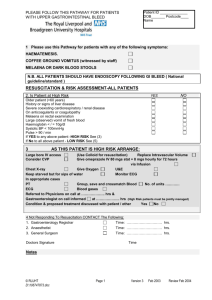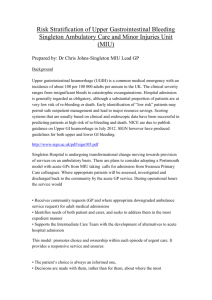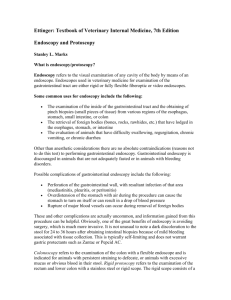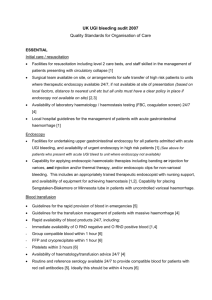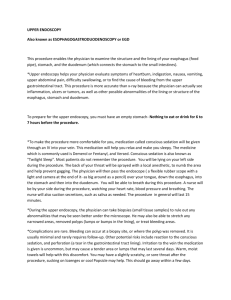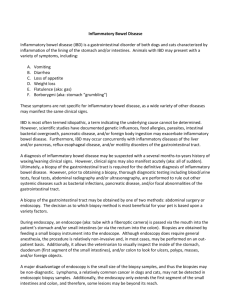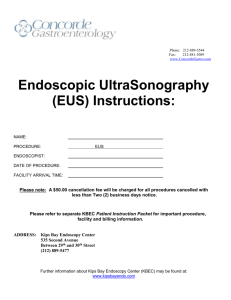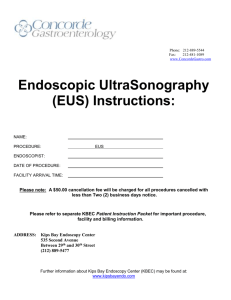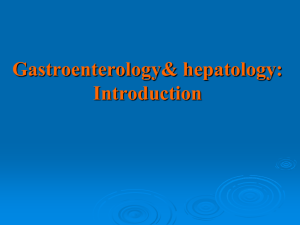it here - Flushing Endoscopy Center
advertisement
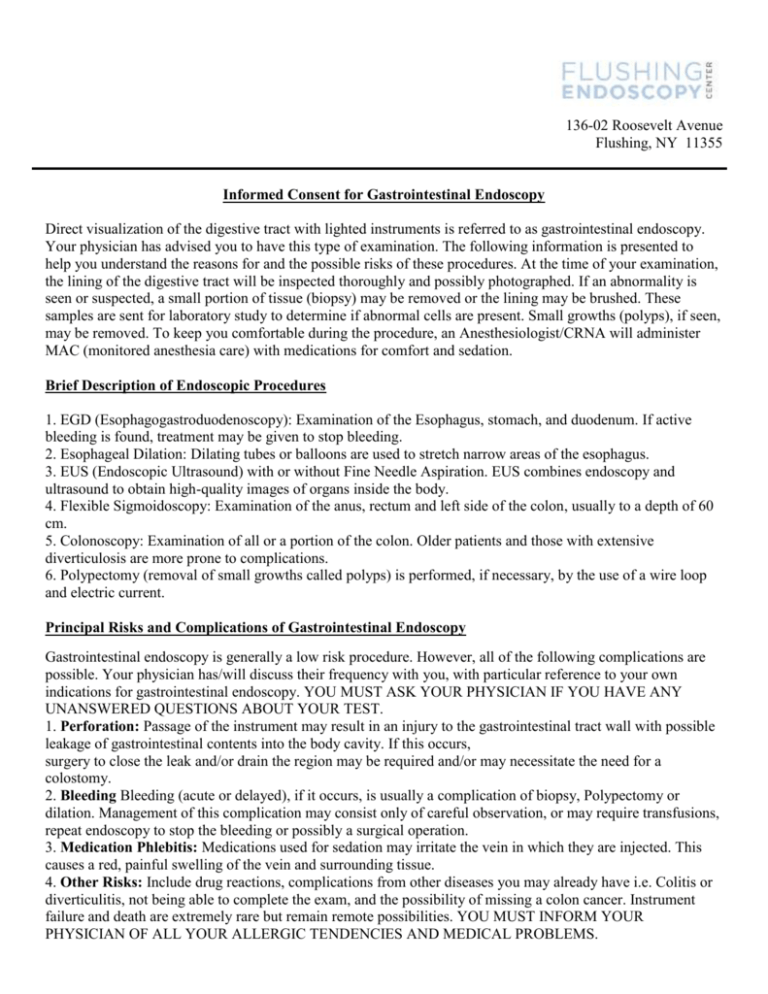
136-02 Roosevelt Avenue Flushing, NY 11355 Informed Consent for Gastrointestinal Endoscopy Direct visualization of the digestive tract with lighted instruments is referred to as gastrointestinal endoscopy. Your physician has advised you to have this type of examination. The following information is presented to help you understand the reasons for and the possible risks of these procedures. At the time of your examination, the lining of the digestive tract will be inspected thoroughly and possibly photographed. If an abnormality is seen or suspected, a small portion of tissue (biopsy) may be removed or the lining may be brushed. These samples are sent for laboratory study to determine if abnormal cells are present. Small growths (polyps), if seen, may be removed. To keep you comfortable during the procedure, an Anesthesiologist/CRNA will administer MAC (monitored anesthesia care) with medications for comfort and sedation. Brief Description of Endoscopic Procedures 1. EGD (Esophagogastroduodenoscopy): Examination of the Esophagus, stomach, and duodenum. If active bleeding is found, treatment may be given to stop bleeding. 2. Esophageal Dilation: Dilating tubes or balloons are used to stretch narrow areas of the esophagus. 3. EUS (Endoscopic Ultrasound) with or without Fine Needle Aspiration. EUS combines endoscopy and ultrasound to obtain high-quality images of organs inside the body. 4. Flexible Sigmoidoscopy: Examination of the anus, rectum and left side of the colon, usually to a depth of 60 cm. 5. Colonoscopy: Examination of all or a portion of the colon. Older patients and those with extensive diverticulosis are more prone to complications. 6. Polypectomy (removal of small growths called polyps) is performed, if necessary, by the use of a wire loop and electric current. Principal Risks and Complications of Gastrointestinal Endoscopy Gastrointestinal endoscopy is generally a low risk procedure. However, all of the following complications are possible. Your physician has/will discuss their frequency with you, with particular reference to your own indications for gastrointestinal endoscopy. YOU MUST ASK YOUR PHYSICIAN IF YOU HAVE ANY UNANSWERED QUESTIONS ABOUT YOUR TEST. 1. Perforation: Passage of the instrument may result in an injury to the gastrointestinal tract wall with possible leakage of gastrointestinal contents into the body cavity. If this occurs, surgery to close the leak and/or drain the region may be required and/or may necessitate the need for a colostomy. 2. Bleeding Bleeding (acute or delayed), if it occurs, is usually a complication of biopsy, Polypectomy or dilation. Management of this complication may consist only of careful observation, or may require transfusions, repeat endoscopy to stop the bleeding or possibly a surgical operation. 3. Medication Phlebitis: Medications used for sedation may irritate the vein in which they are injected. This causes a red, painful swelling of the vein and surrounding tissue. 4. Other Risks: Include drug reactions, complications from other diseases you may already have i.e. Colitis or diverticulitis, not being able to complete the exam, and the possibility of missing a colon cancer. Instrument failure and death are extremely rare but remain remote possibilities. YOU MUST INFORM YOUR PHYSICIAN OF ALL YOUR ALLERGIC TENDENCIES AND MEDICAL PROBLEMS. Alternatives to Gastrointestinal Endoscopy Although gastrointestinal endoscopy is an extremely safe and effective means of examining the gastrointestinal tract, it is not 100 percent accurate in diagnosis. In a small percentage of cases, a failure of diagnosis or misdiagnosis may result. Other diagnostic or therapeutic procedures, such as virtual colonoscopy, medical treatment, x-ray and surgery are available. Another option is to choose no diagnostic studies and/or treatment. Your physician will be happy to discuss these options with you. I understand that because of the sedation I may not drive or operate machinery, make critical decisions, sign legal documents or consume alcoholic beverages the day of the procedure. I have been fully informed of the risks and possible complications of my procedure/anesthesia and have been given the opportunity to ask questions. I hereby authorize and consent to the above procedure: Endoscopy (EGD) with biopsy, polypectomy, dilation of the esophagus Sigmoidoscopy with possible biopsy and / or polypectomy Colonoscopy with possible biopsy or polypectomy Other ___________________________ I understand that unforeseen conditions may be revealed that may necessitate change or extension of the original procedure(s) or a different procedure(s) than those already explained to me. I therefore authorize and request that the above-named Physician, his assistants or designees may perform such procedures as necessary and desirable in the exercise of his/her professional judgment. I understand that Flushing Endoscopy Center does not recognize Do Not Resuscitate orders and will use all measures possible to sustain life. I am aware that the practice of medicine and surgery is not an exact science. I acknowledge that no guarantees have been made to me concerning the result of this procedure. _______________________________________________ Patient Signature _________________________ Date ____________________________________________ Patient/Representative ____________________________ Date ____________________________________________ Signature of Treating Doctor _____________________________ Date _____________________________________________ Person obtaining consent (Doctor, Certified Nurse) _____________________________ Date
